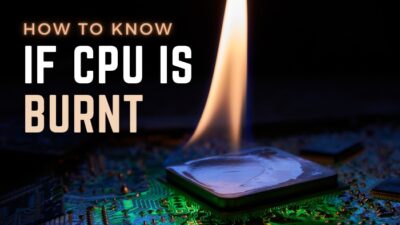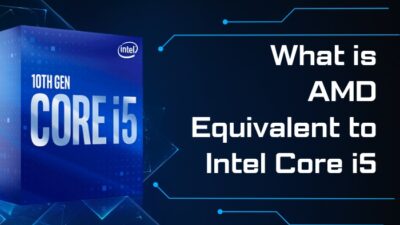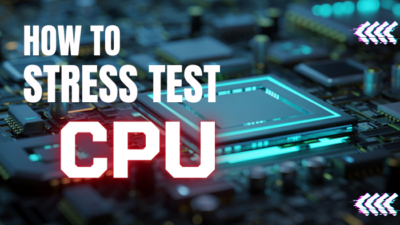As the title suggests, you need to have an in-depth knowledge of overclocking before you start tweaking the BIOS & risk permanent damage to your PC components.
When it comes to overclocking, one of the things you need to keep in mind is the CPU ring ratio. But what is ring ratio? And why does it matter?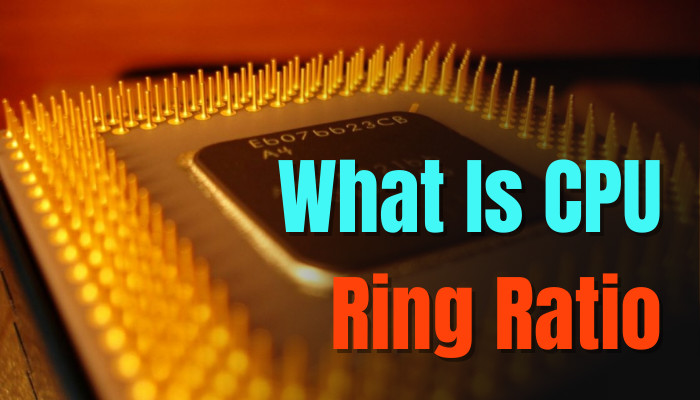
Let’s dive into this article to know the answers, shall we?
What Does CPU Ring Ratio Mean?
For CPU overclocking, the ring ratio section in the BIOS adjusts the speed of certain parts of the processor such as cache and memory controller. In short, ring ratio is the technical name for CPU cache speed adjustment.
Cache/Ring Bus speed means the speed that the ring bus/LLC (L3 Cache) runs at. While core frequency affects how fast the processor can execute a task, the cache speed determines the speed of other internal CPU components.
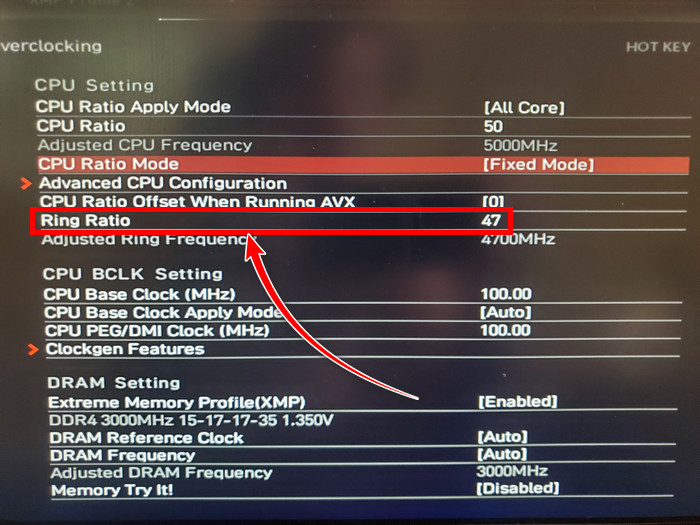
By adjusting the ring ratio, you are configuring the cache speed & determining how fast data goes around the CPU due to the ring bus.
It can also affect the memory controller speed along with other essential components that ensure core clock stability, which brings us to our next topic…
Why Does CPU Ring Ratio Matter?
CPU overclocking is pretty straightforward on its own but there are some elements that might cause performance stability issues. For ensuring a stable boost frequency, users need to adjust the ring ratio value from the BIOS.
To be honest, you can leave the ring ratio untouched and won’t notice a difference in your day-to-day PC usage. But certain CPU-demanding tasks such as high FPS competitive gaming can require the processor to hit the maximum turbo boost for a prolonged period.
In such a case, maintaining boost frequency on an overclocked CPU requires fast L3 cache speed to keep up with the data processing. Otherwise, the performance might throttle and the program might even crash.
So why does it happen?
Well, processors usually operate at a much higher speed than the system memory/RAM. So in order to continuously feed the CPU with data, the system relies on cache memory which operates at the same speed as the processor.
After overclocking the CPU, the processor speed becomes faster than the cache speed.
As a result, if you don’t increase the cache speed as well, the data-feeding process becomes slower. In most cases, it doesn’t affect much. But in certain CPU-intensive tasks, it matters.
This is why adjusting the ring ratio value when overclocking the processor is quite useful. Although the performance increase is almost negligible.
For my i7 12700k, increasing the ring ratio came with a diminishing return. I only noticed a slight performance increase in synthetic benchmarks. But other than that, no difference; zero FPS increase while gaming and no improvement in video rendering time.
Furthermore, there have been reports of unstable overclocking due to increasing the ring ratio.
So you might as well leave this option untouched if you’re unsure about it. You won’t notice much of a difference unless you’re doing extreme overclocking (like increasing clock speed from 5GHz to 6GHz). You can also check if the overclocking profile is stable or not.
Difference between CPU Ratio & Ring Ratio
If you’ve tried overclocking your desktop from the BIOS, you may have noticed two options: CPU Ration and Ring Ratio. CPU ratio is for core clock speed, and ring ratio is for cache speed.
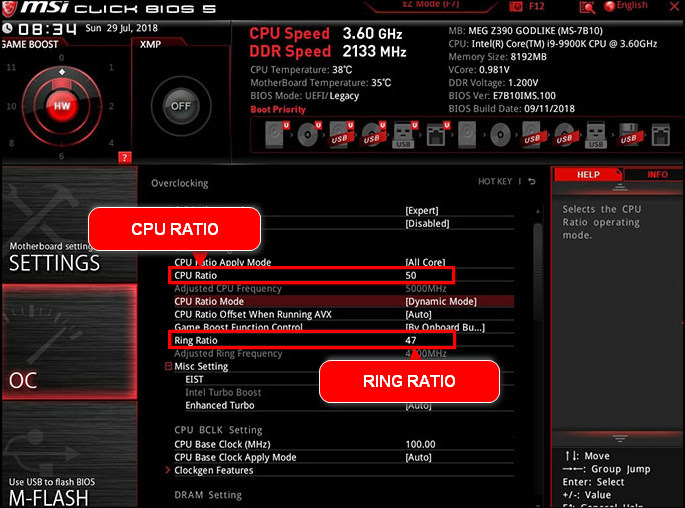
CPU core ratio is actually a multiplier that determines the processor clock speed. CPU clock speed is calculated by multiplying the core ratio with the base clock speed(BCLK).
Suppose, the core ratio is 45 and the BCLK is 100MHz. So the CPU clock speed will be 4,500MHz or 4.5GHz.
Meanwhile, the ring ratio is the multiplier for cache speed. This dictates the cache frequency, along with the memory controller speed. The core ratio doesn’t affect the ring ratio, but setting the ring ratio value close to the core ratio is better to ensure a solid overclocking experience.
Using the best CPU cooler for overclocking is just as important as core and ring ratio values. And if you’re wondering whether overclocking the CPU reduces its life span, you can check that as well.
Frequently Asked Questions
What should the Ring ratio be set to?
The ring ratio should be 3 times less than the CPU ratio, but you can try other configurations as well.
Should I disable ring to core ratio offset?
Yes. When you’re manually overclocking the CPU, disabling the ring to core ratio is important as it ensures that the manually set ratio is always applied.
Is ring ratio important?
Yes, the CPU ring ratio is important when it comes to overclocking as it helps stabilize the boosted frequency.
Wrapping Up
In conclusion, the ring ratio is only important when you consider overclocking your CPU. But outside of OC, it’s nothing to be worried about.
This write-up should suffice for you to know about CPU ring ratio as I have covered every aspect of it. But if you still have any queries on this topic, feel free to let me know in the comments below.
Adios!

